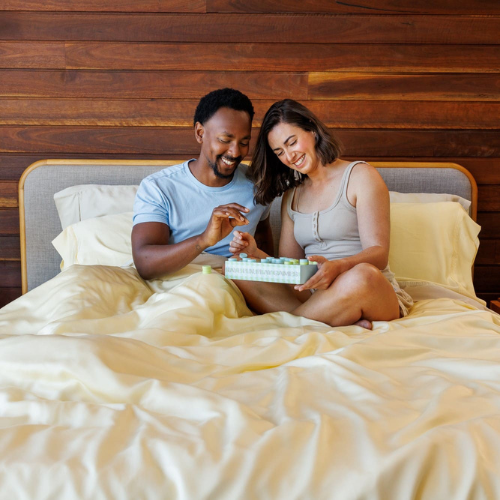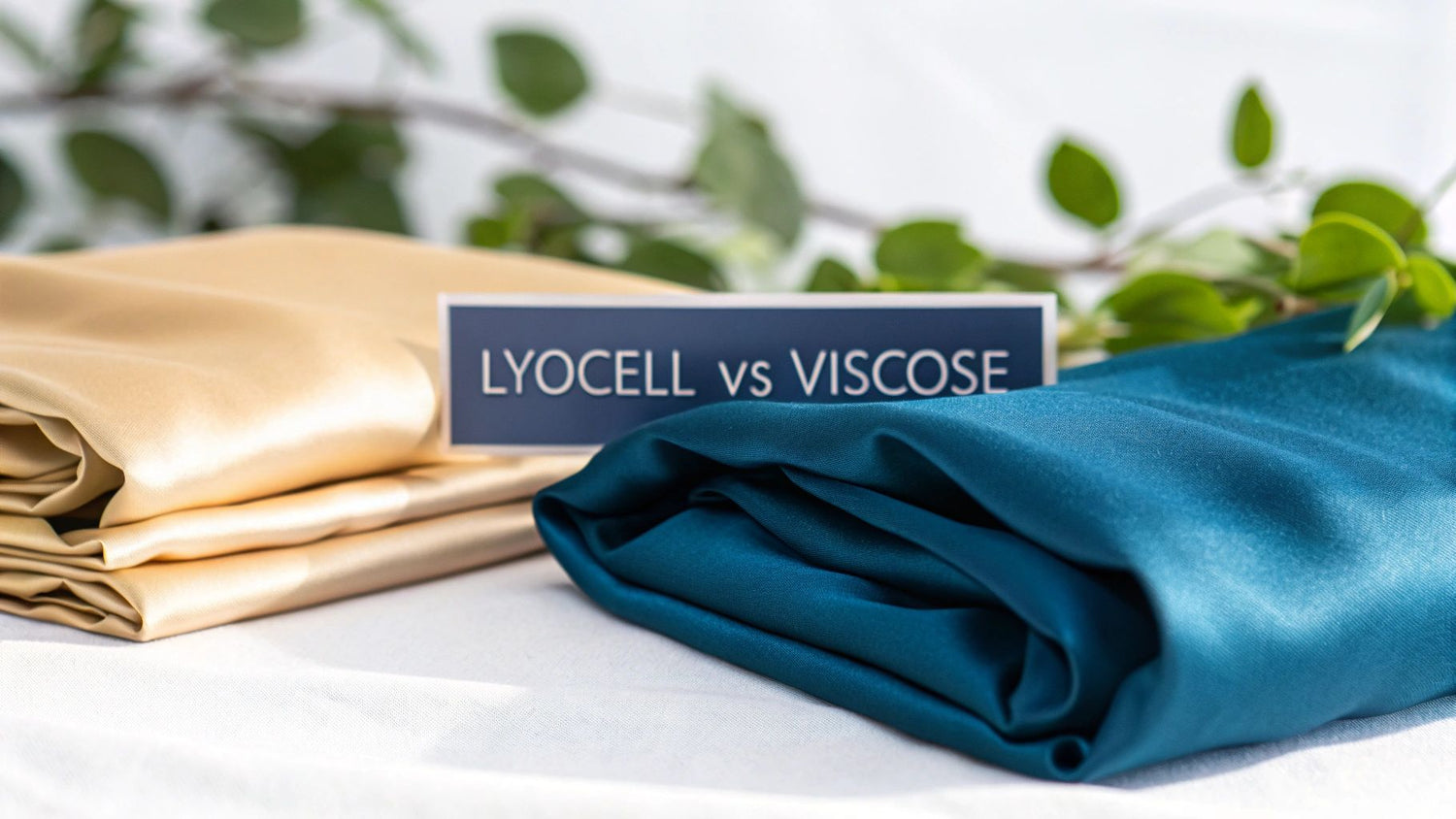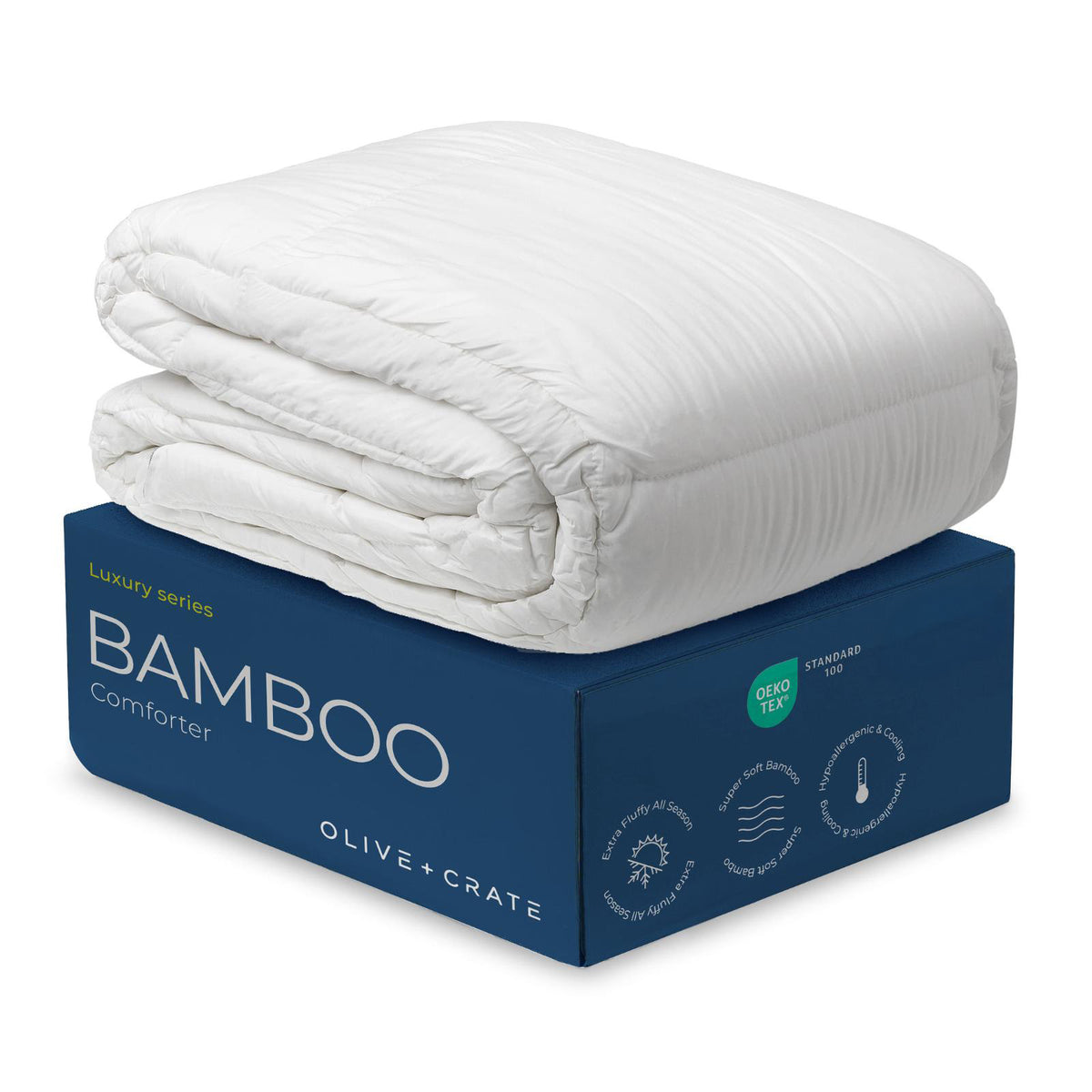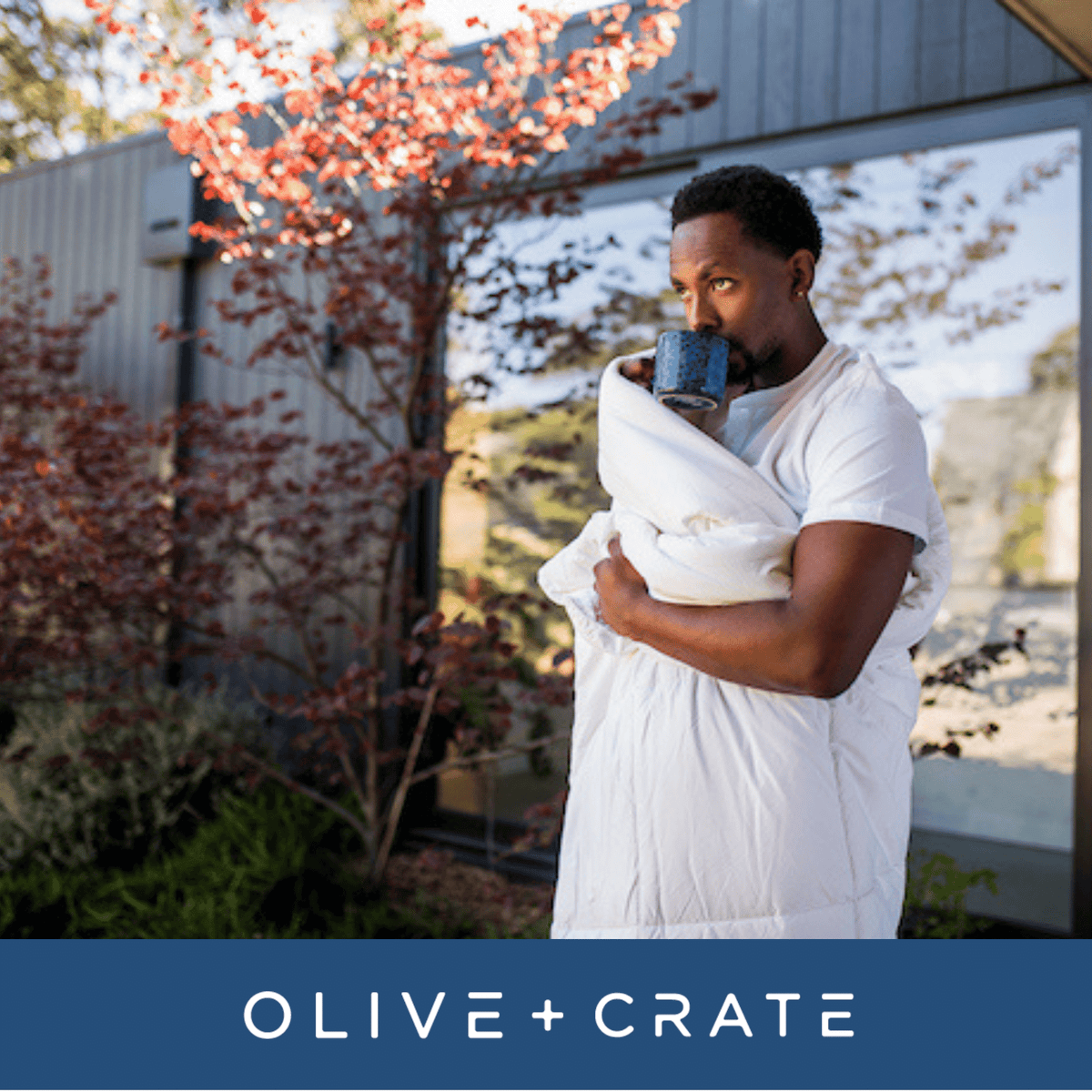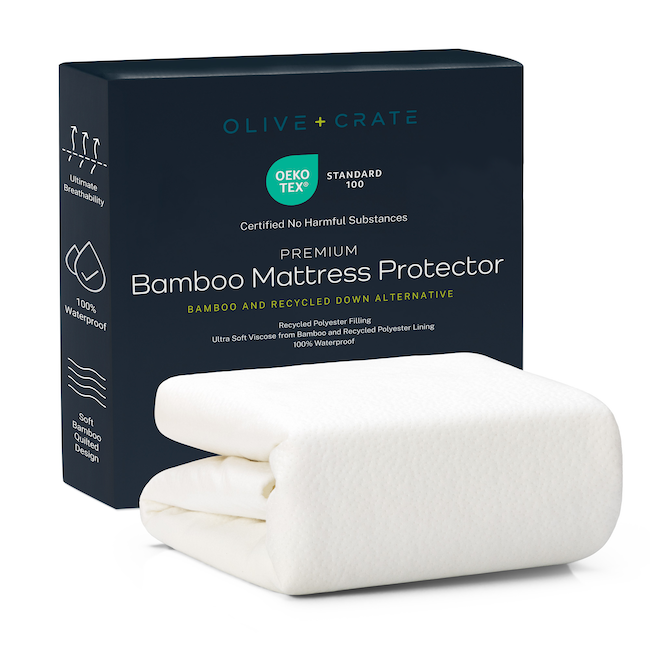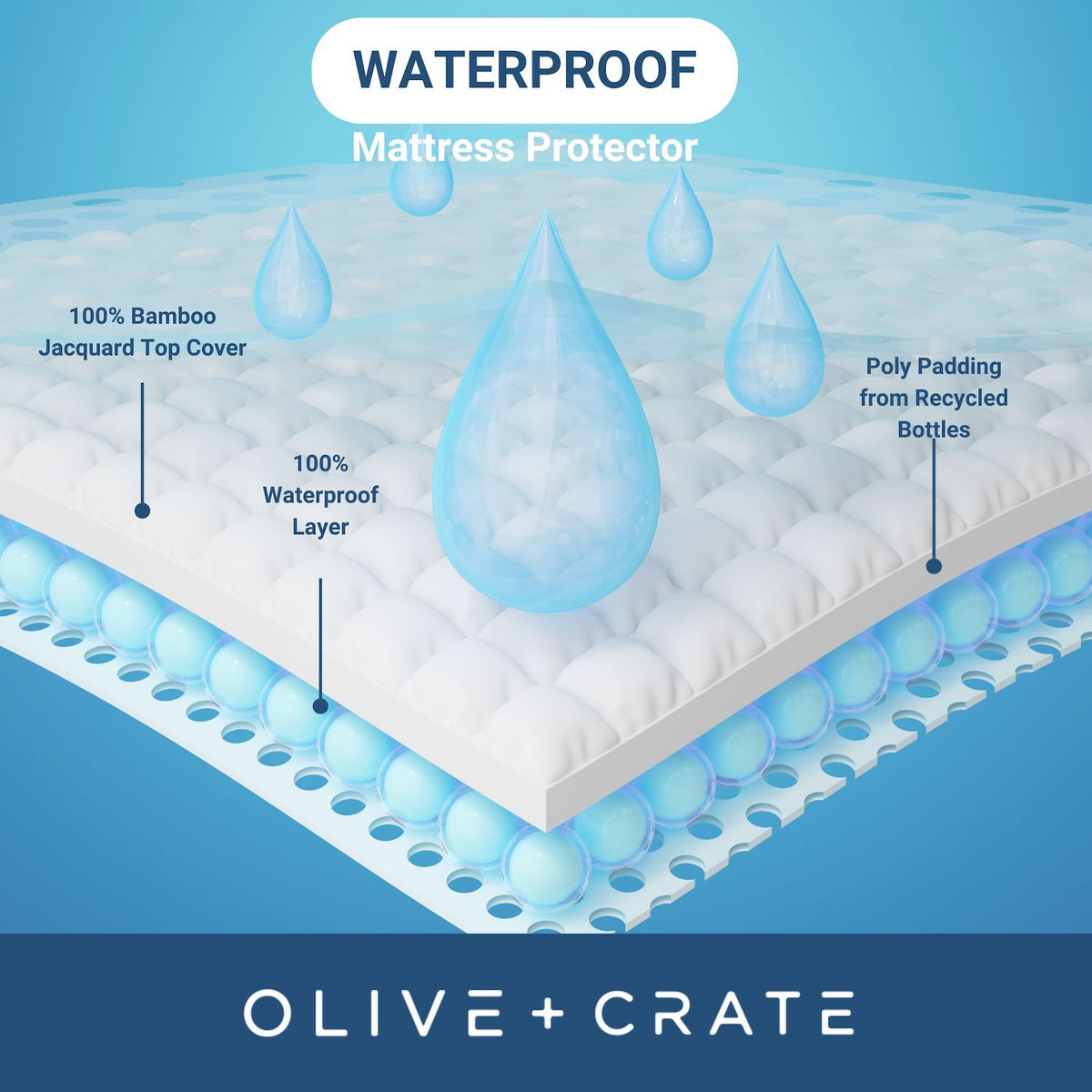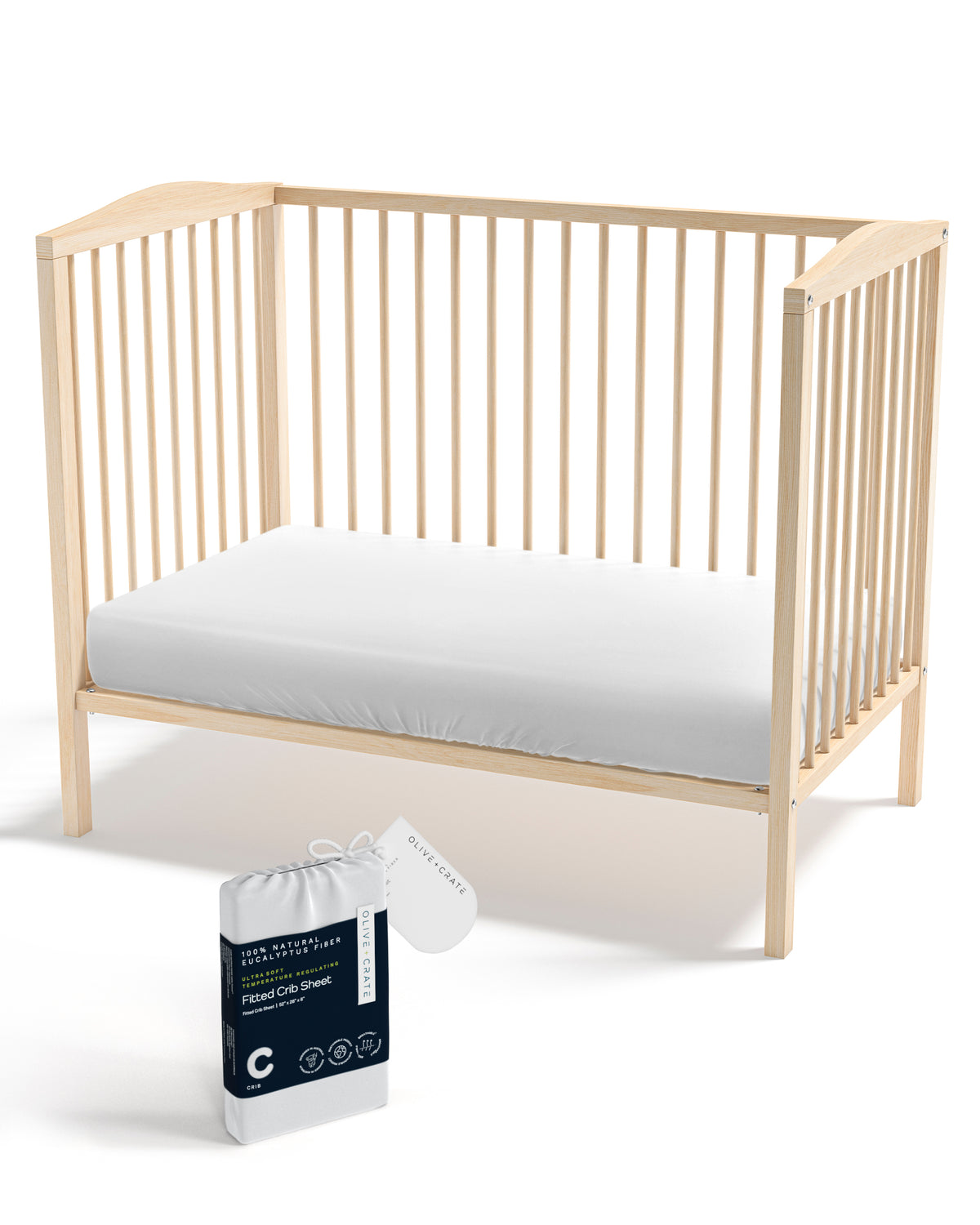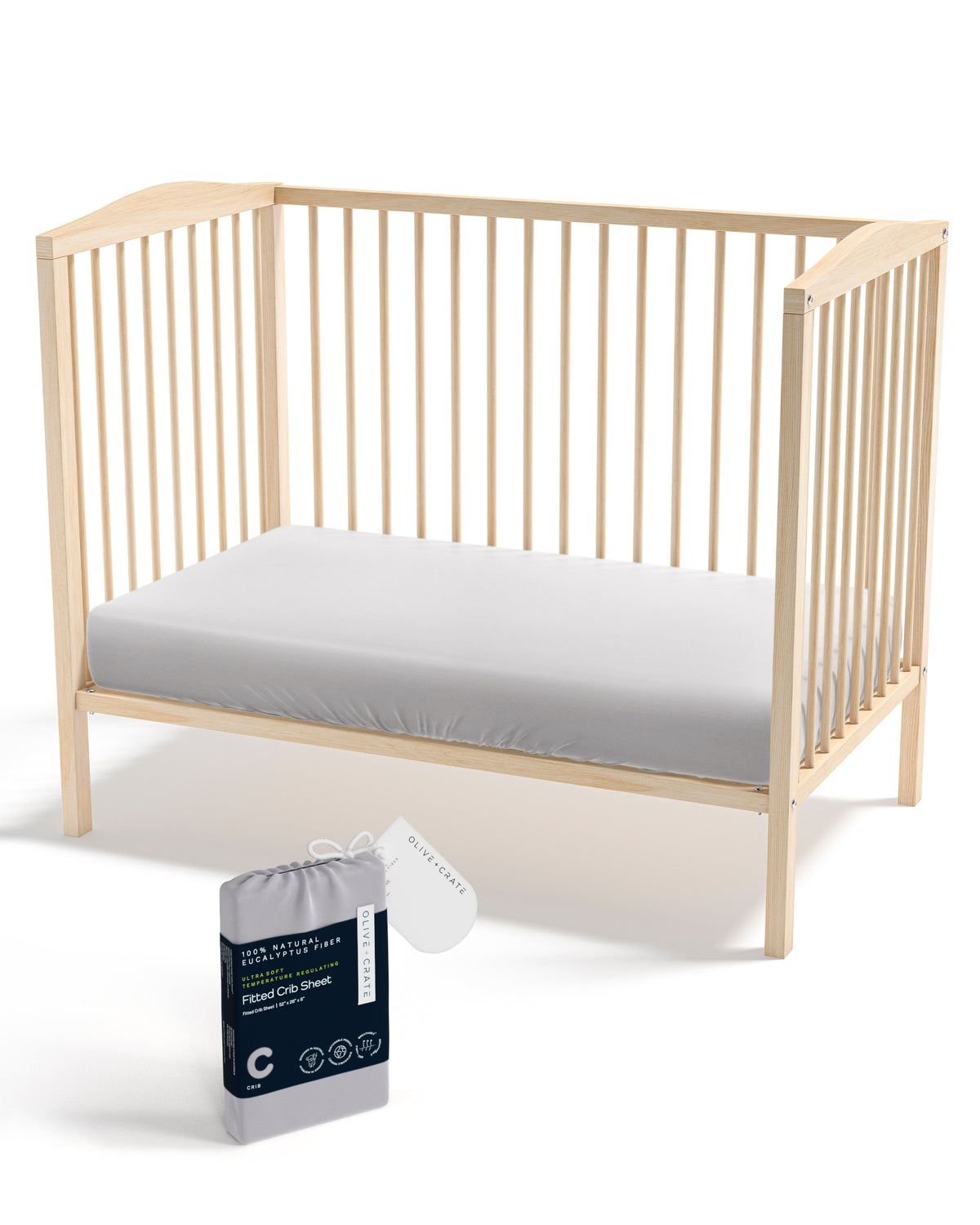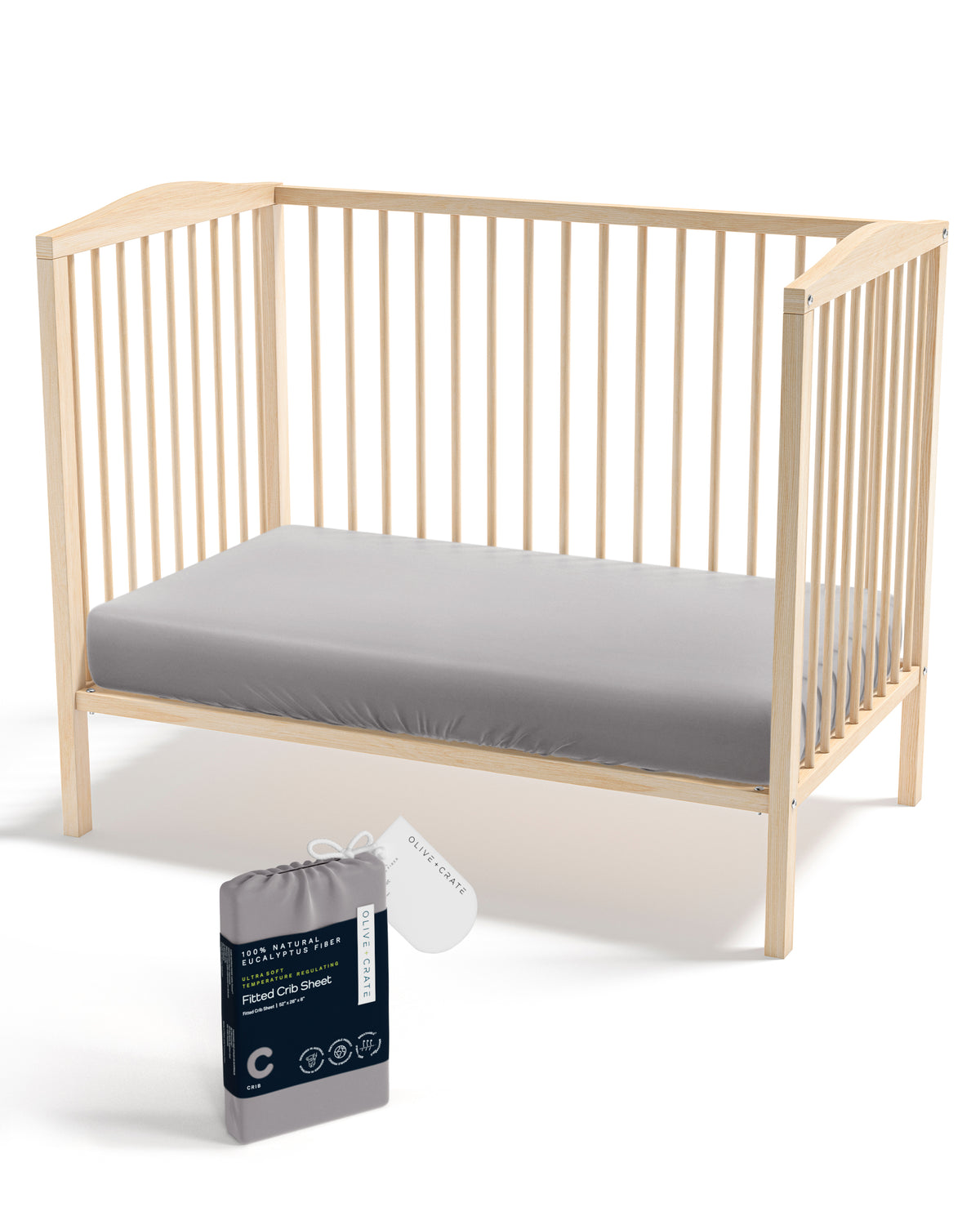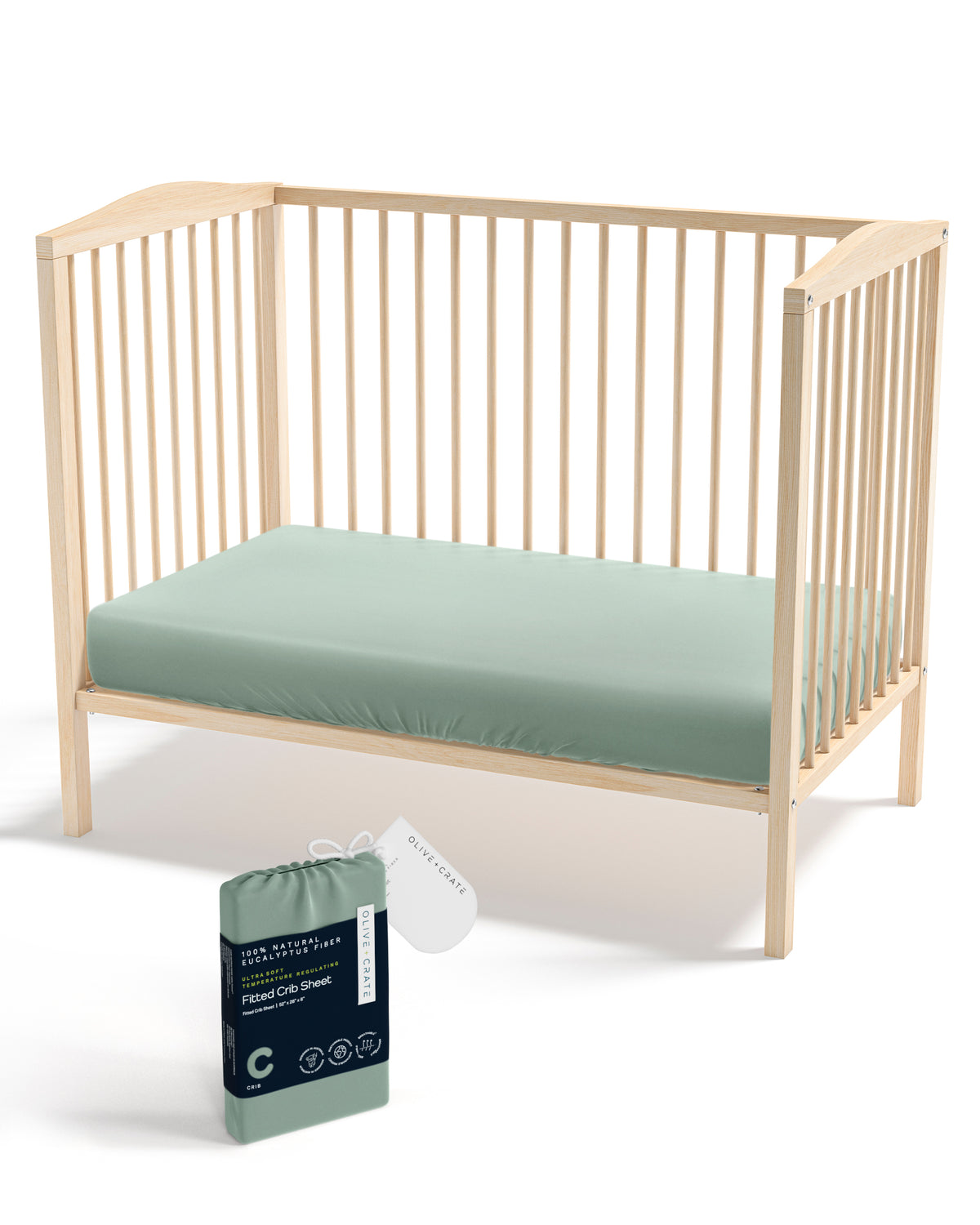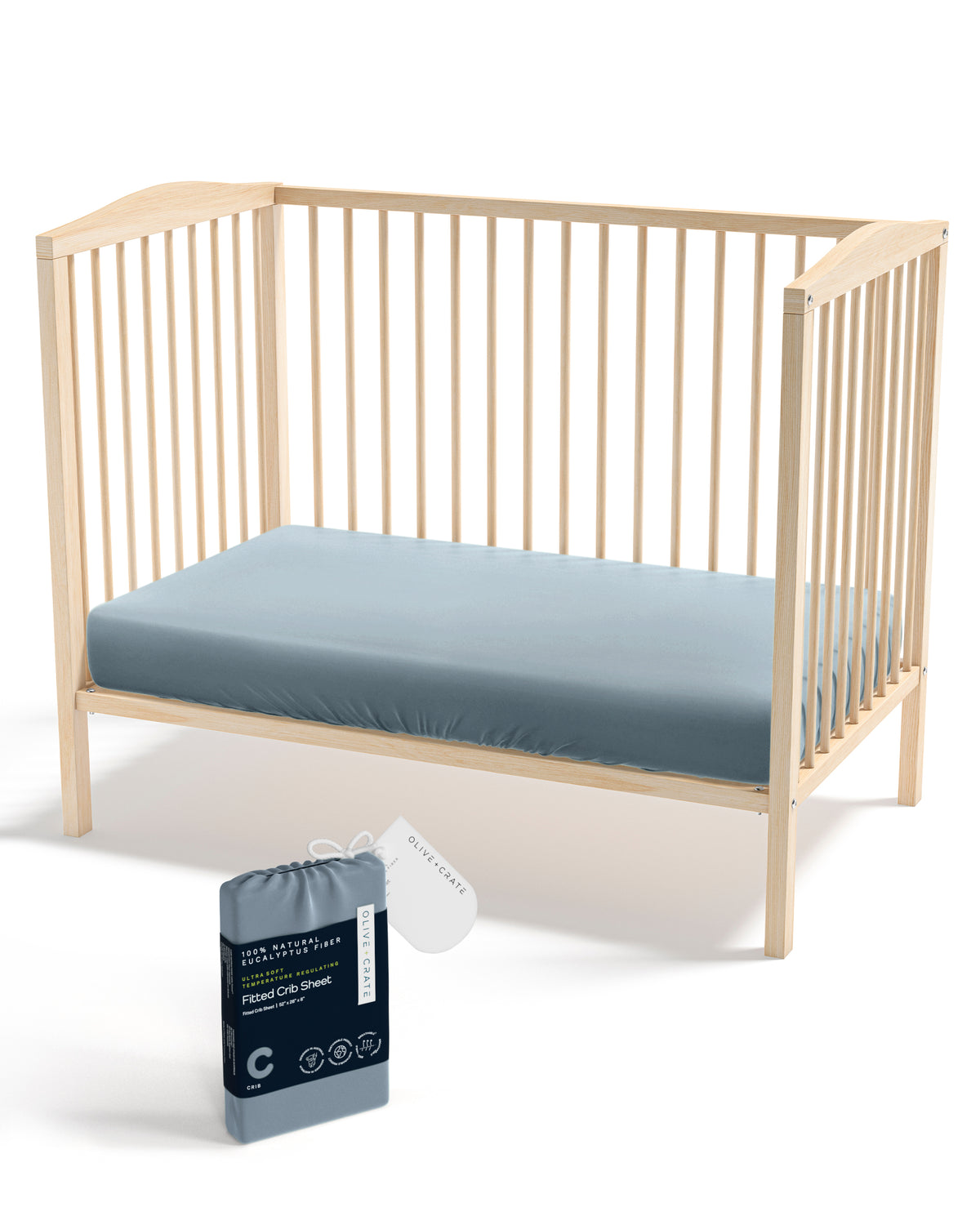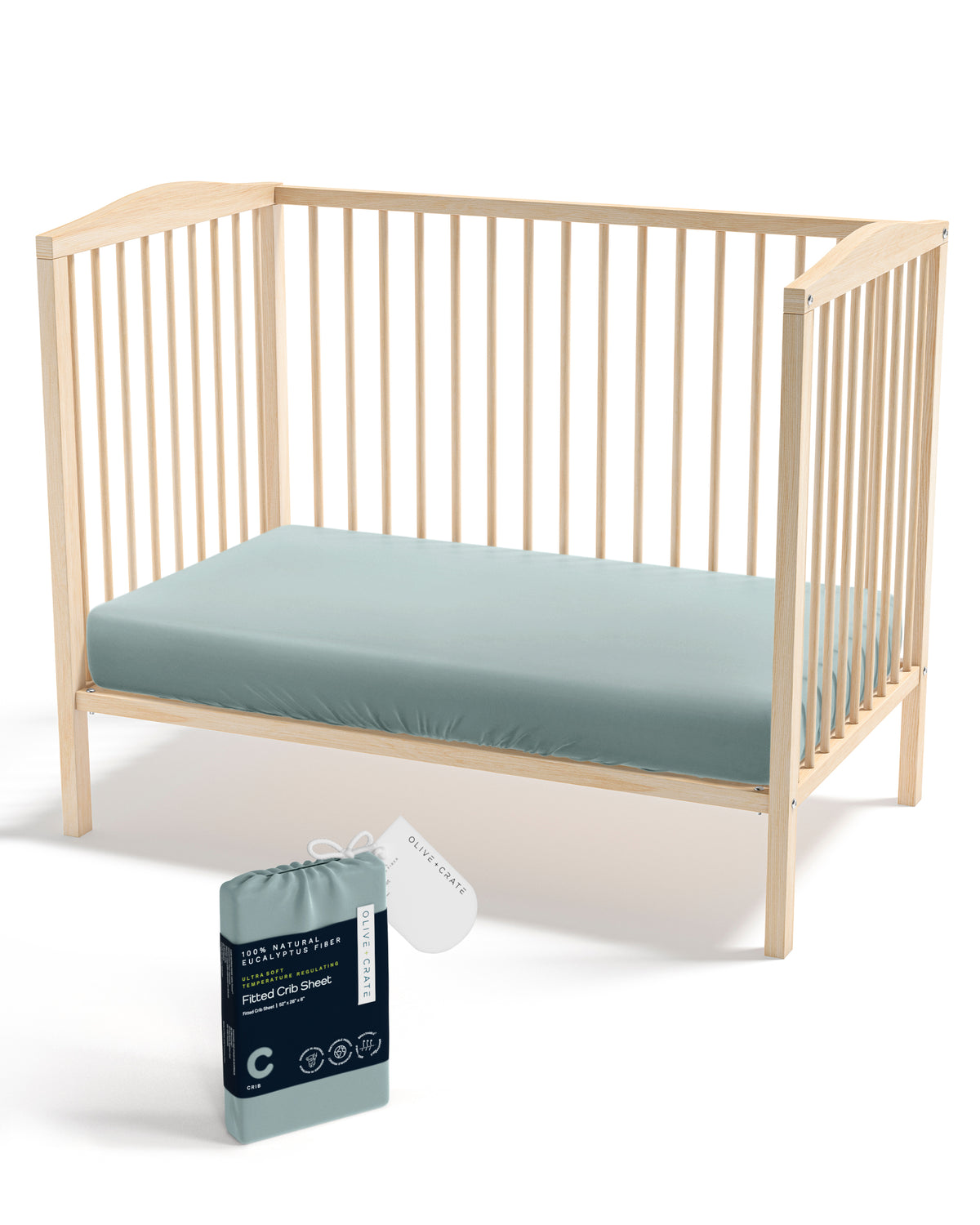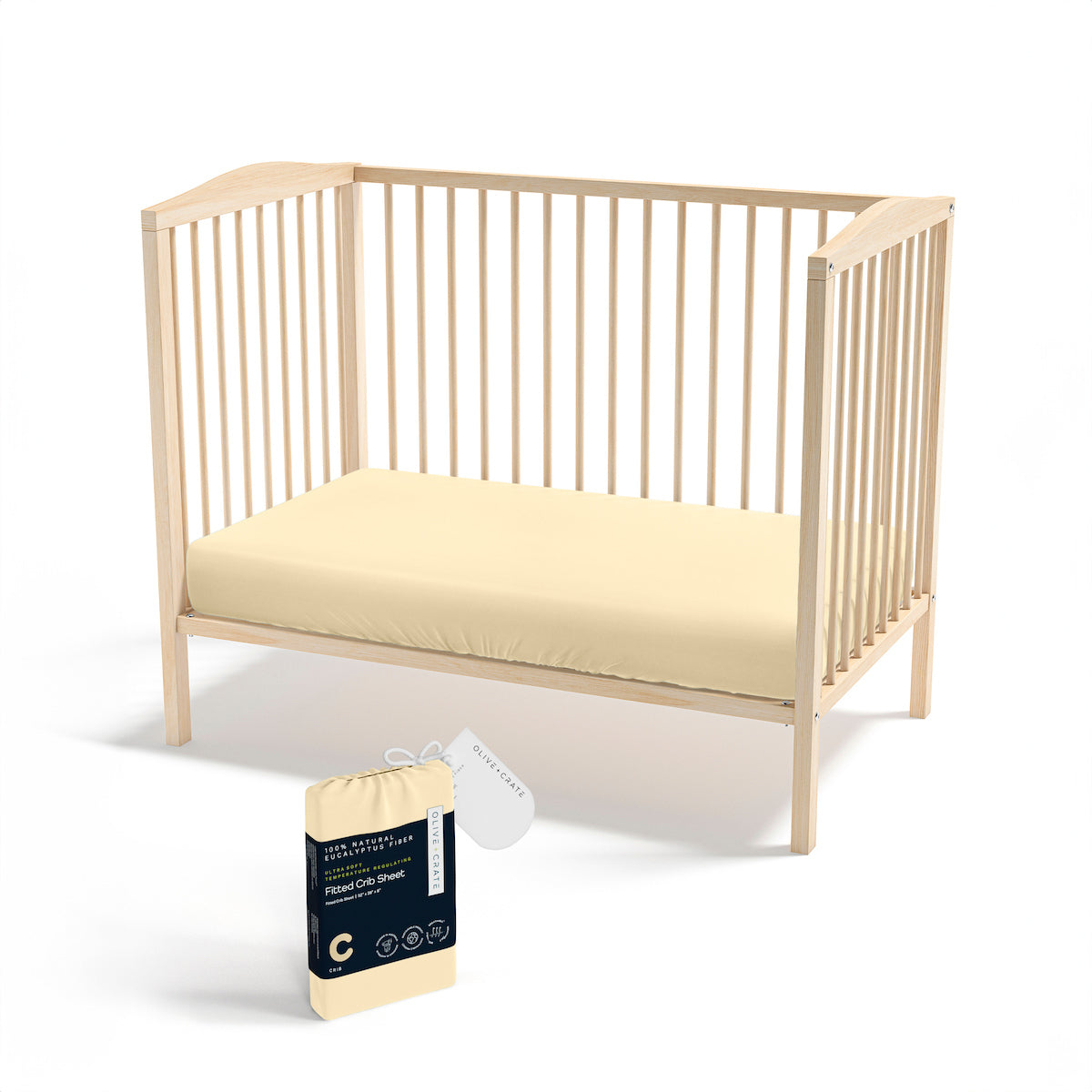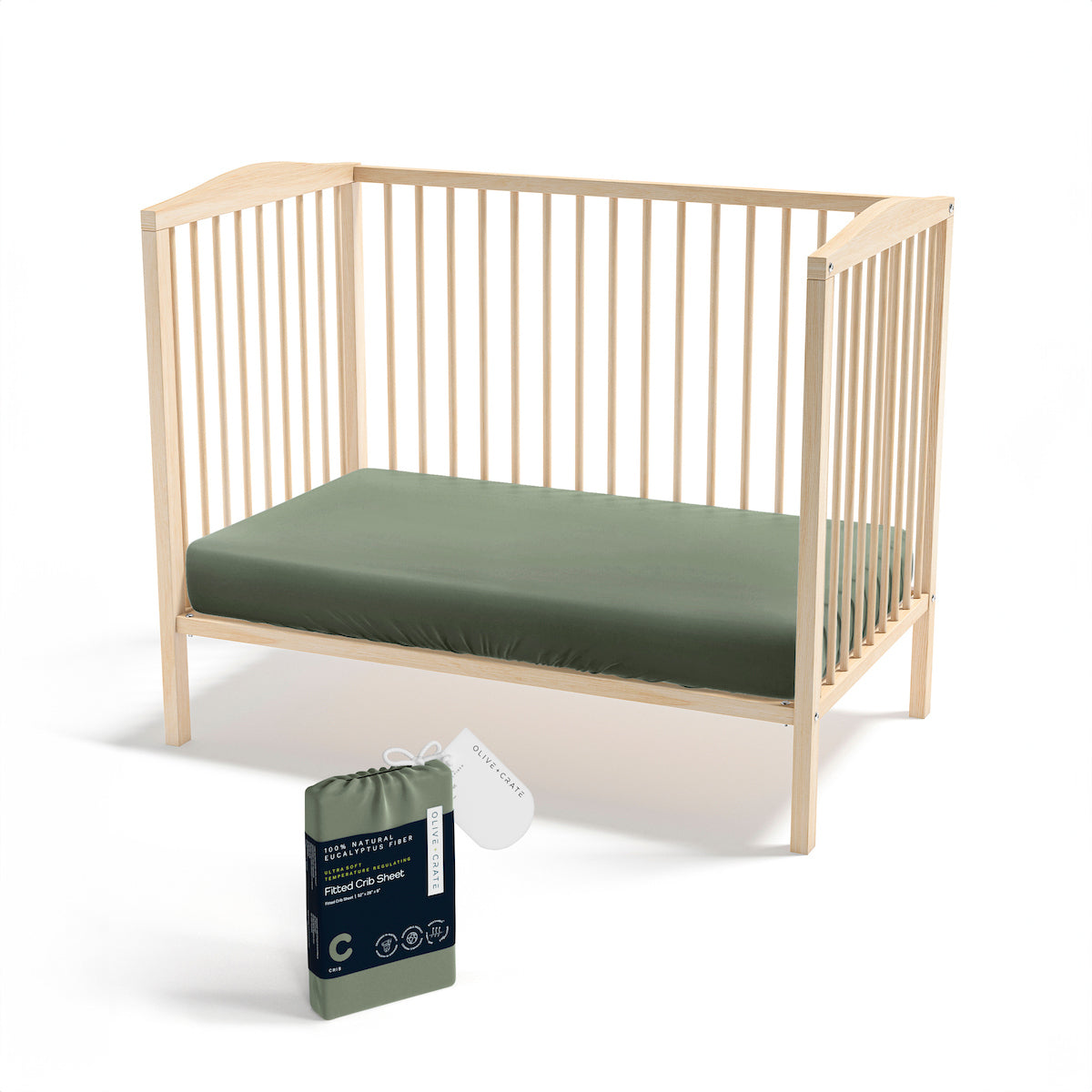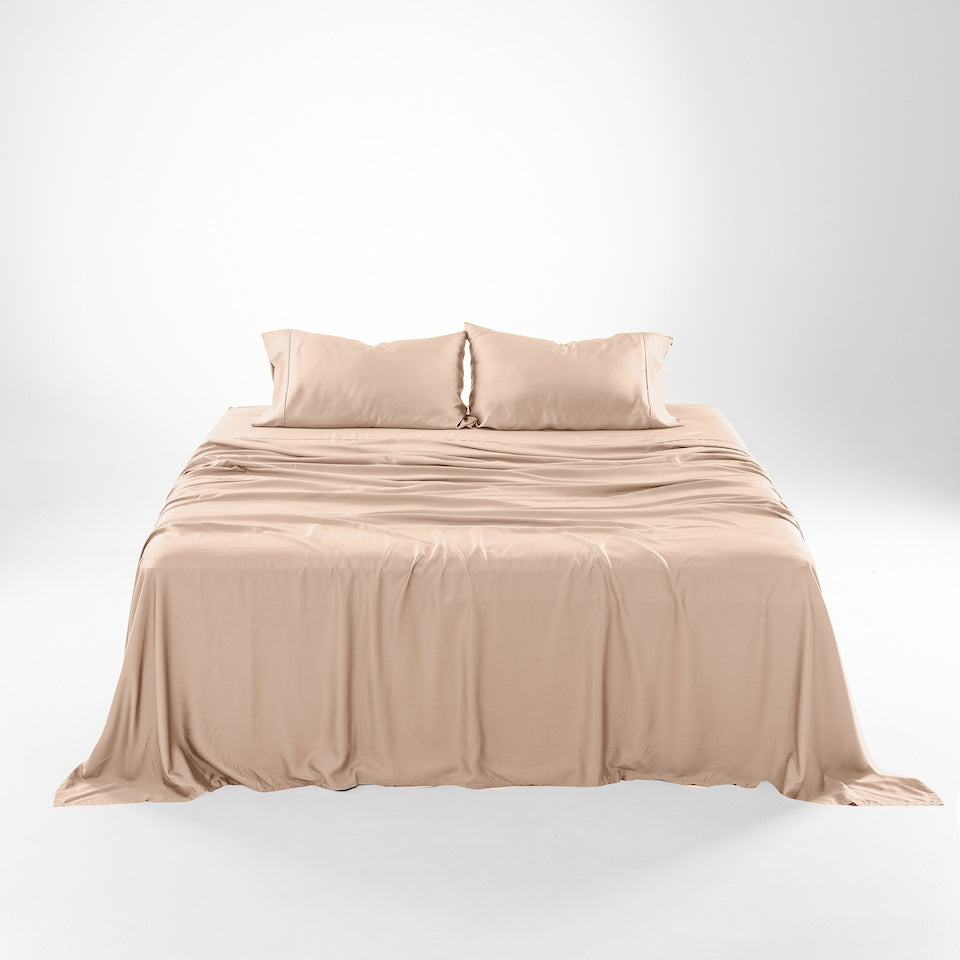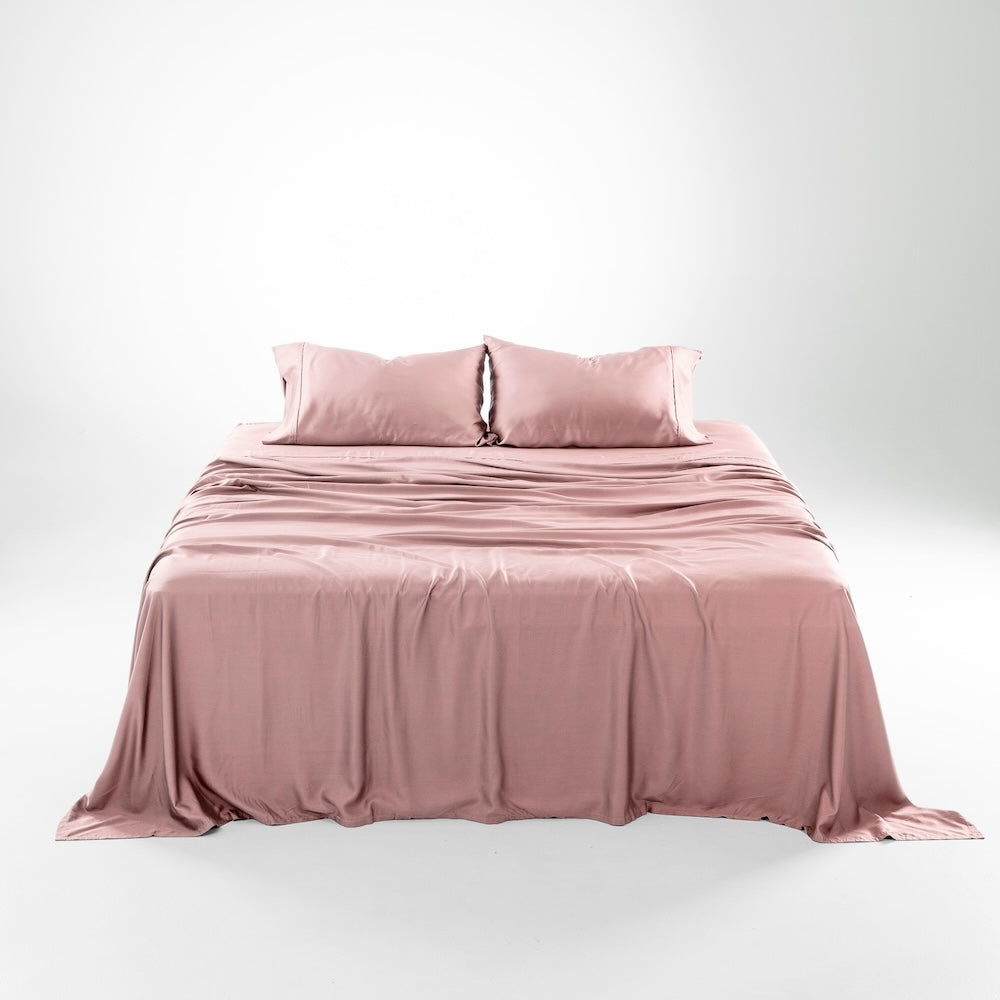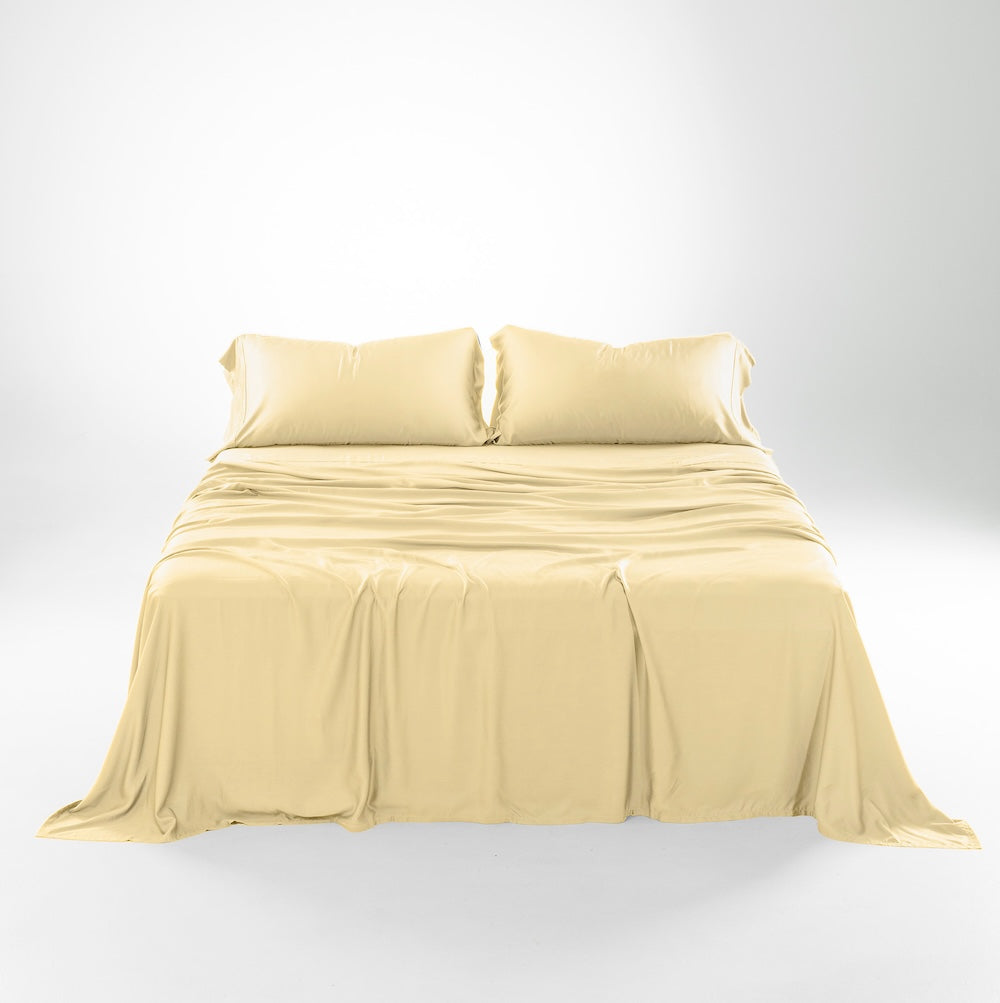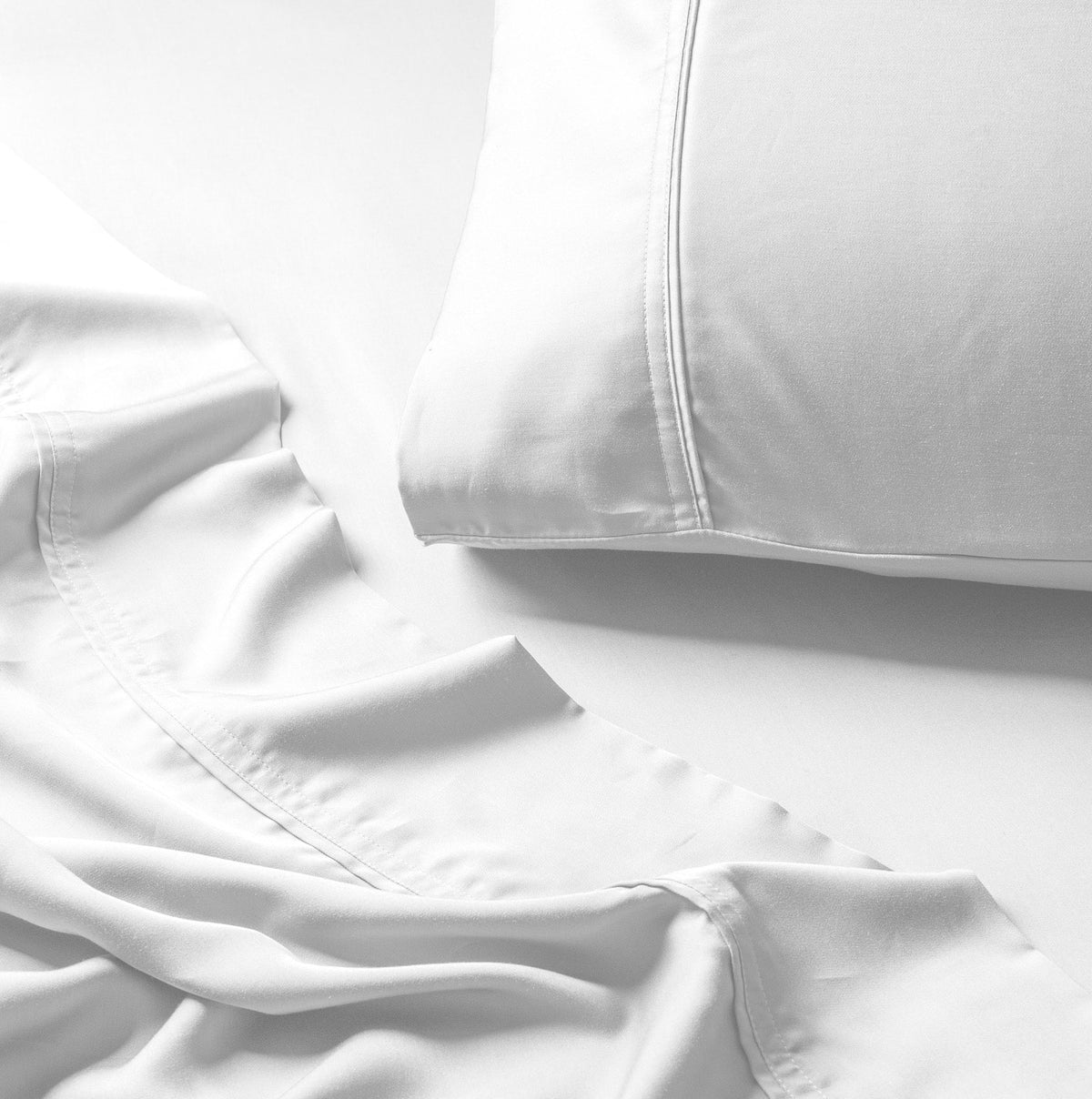Decoding the Fabric Debate: Lyocell vs. Viscose
Lyocell and viscose: both touted as eco-friendly fabrics, but are they truly equal? This list breaks down six key differences between lyocell and viscose, helping you choose the right fabric for your needs. Discover how their production processes, durability, comfort, and environmental impact compare. Whether you're prioritizing sustainability, a luxurious feel, or easy care, understanding the distinctions between lyocell and viscose empowers you to make informed decisions.
1. Production Process and Fiber Origin
When comparing lyocell vs viscose, understanding the production process and fiber origin is crucial. Both fabrics originate from the same source – wood pulp, primarily from sustainably managed forests. However, the journey from tree to textile differs significantly, impacting each fabric's environmental footprint, performance characteristics, and cost. This fundamental difference makes the production process a key consideration in the lyocell vs viscose debate.
Both lyocell and viscose are classified as regenerated cellulose fibers. This means that the cellulose from wood pulp is dissolved, then reformed into fibers. It’s the how of this regeneration process that sets these two fabrics apart.
Lyocell boasts a closed-loop production system, employing a non-toxic solvent called N-methylmorpholine N-oxide (NMMO). This solvent dissolves the wood pulp, creating a solution that is then spun into fibers. Crucially, approximately 99% of the NMMO solvent is recovered and reused in the closed-loop system, minimizing waste and environmental impact.
Viscose production, on the other hand, relies on an open-loop system. The wood pulp is treated with carbon disulfide (CS₂) and caustic soda (NaOH) to dissolve the cellulose. While effective, this process generates a significant amount of chemical byproduct that is often discharged as wastewater, raising environmental concerns. Although efforts are being made to develop more sustainable viscose production methods, the conventional process remains heavily reliant on these chemicals.
The following infographic visualizes the key differences in the production process of lyocell and viscose, highlighting the closed-loop system of lyocell compared to the open-loop system of viscose.

As the infographic illustrates, the key differentiating factor lies in the second and third stages – dissolution and solvent recovery/discharge. Lyocell’s closed-loop system minimizes environmental impact by recovering and reusing the solvent, while viscose's open-loop process leads to chemical discharge.
Here's a breakdown of the pros and cons of each production method:
Lyocell:
- Pros: Environmentally friendly due to closed-loop system and non-toxic solvents, requires less water and energy compared to viscose.
- Cons: Higher production costs compared to viscose, limited manufacturing facilities globally.
Viscose:
- Pros: Lower production costs, established infrastructure and widespread availability.
- Cons: Environmental concerns due to chemical discharge and higher water and energy consumption.
Both:
- Pros: Utilize a renewable resource (wood pulp).
- Cons: Energy-intensive manufacturing process.
Examples of successful lyocell production include Lenzing AG's TENCEL™ facilities in Austria. For viscose, major producers include Birla Cellulose in India, though companies like Sateri in China are making strides in developing more sustainable viscose practices.
Learn more about Production Process and Fiber Origin
So, when should you choose lyocell over viscose, or vice-versa? If environmental impact is a top priority, lyocell emerges as the clear winner. However, if budget is a primary constraint, viscose might be the more practical choice. Understanding these trade-offs is crucial for making informed decisions about the clothes you buy and wear.
2. Moisture Management and Breathability
When comparing lyocell vs viscose, moisture management and breathability are key differentiators that significantly impact comfort, especially in clothing and bedding. These two properties, often used interchangeably, work together to regulate body temperature and keep you feeling fresh. Moisture management refers to a fabric's ability to wick away sweat and moisture from the skin. Breathability, on the other hand, describes how well air can circulate through the fabric, facilitating evaporation and preventing overheating.
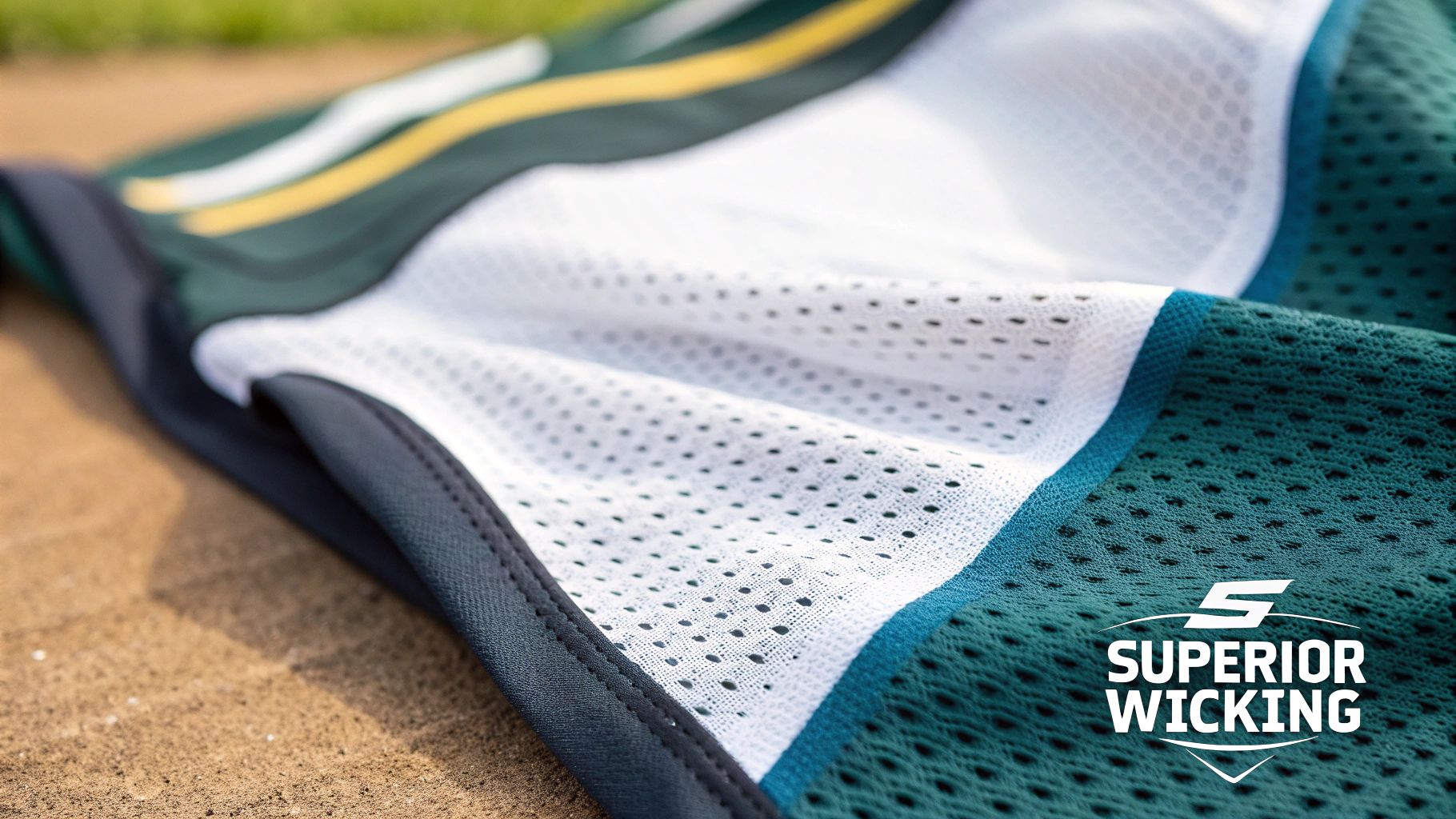
Lyocell takes the lead in this category, boasting superior moisture-wicking and breathability compared to viscose. This advantage stems from the fiber's unique structure. Lyocell fibers are smooth and rounded, creating a fabric with excellent air permeability. This structure allows for efficient moisture transport, quickly drawing sweat away from the skin and releasing it into the air. This rapid evaporation process helps regulate body temperature, keeping you cool and dry even during intense activity or warm nights. In fact, lyocell absorbs 50% more moisture than cotton, a benchmark for natural fiber absorbency.
Viscose, while still considered a breathable fabric, doesn't quite match lyocell's performance. Its moisture-wicking capabilities are lower, and it tends to absorb and retain more water, making it feel heavier and potentially clammy when wet. This difference can be noticeable in humid climates or during physical exertion. While viscose offers natural breathability and comfort in moderate conditions, it might not be the ideal choice for activities that generate a lot of sweat or for those living in particularly humid environments.
This difference in performance earns moisture management a crucial spot in the lyocell vs viscose comparison. The enhanced comfort and dryness offered by lyocell, especially in activewear and bedding, are compelling advantages. Imagine the difference between a sweaty, clingy workout shirt and one that stays dry and comfortable throughout your exercise routine. Or consider the benefits of sleeping on cool, breathable sheets that wick away night sweats, promoting a more restful sleep. This is where lyocell truly shines.
Several brands have recognized the performance benefits of lyocell. Patagonia, known for its high-performance outdoor apparel, utilizes TENCEL™ lyocell in its activewear lines. Similarly, Uniqlo incorporates lyocell blends in its Airism collection, designed for comfort in warm weather. While viscose is commonly found in summer dresses from brands like H&M and Zara, its breathability makes it suitable for casual wear in less demanding conditions.
To optimize the moisture properties of your clothing and bedding, consider blending lyocell or viscose with other fibers. For instance, combining lyocell with cotton can create a fabric that balances absorbency, softness, and durability. The weight and weave of the fabric also play a role in breathability. Lighter, looser weaves generally offer better air circulation than heavier, tighter weaves.
When deciding between lyocell and viscose, consider your needs and the intended use. Choose lyocell for high-performance moisture management in activewear, athletic apparel, or bedding. If you're looking for comfortable everyday wear in a dry climate, viscose can be a suitable and more affordable option. Learn more about Moisture Management and Breathability to understand how these factors influence temperature regulation, especially when it comes to sleep quality.
Here's a quick breakdown of the pros and cons:
Lyocell Pros: Exceptional moisture management, stays dry longer, temperature regulating. Lyocell Cons: More expensive than traditional moisture-wicking synthetics.
Viscose Pros: Natural breathability, comfortable in moderate climates. Viscose Cons: Can feel clammy when wet, slower drying.
Both lyocell and viscose offer better air circulation than many synthetic fibers, making them desirable choices for those seeking natural and comfortable fabrics. By understanding the nuances of each fiber, you can make informed decisions that prioritize comfort and performance.
3. Durability and Fiber Strength
When comparing lyocell vs viscose, durability and fiber strength are key differentiators that significantly impact the lifespan and overall value of a garment. Understanding these differences empowers you to make informed purchasing decisions and properly care for your clothes. This is a crucial factor to consider, especially when investing in pieces you intend to wear for years to come.
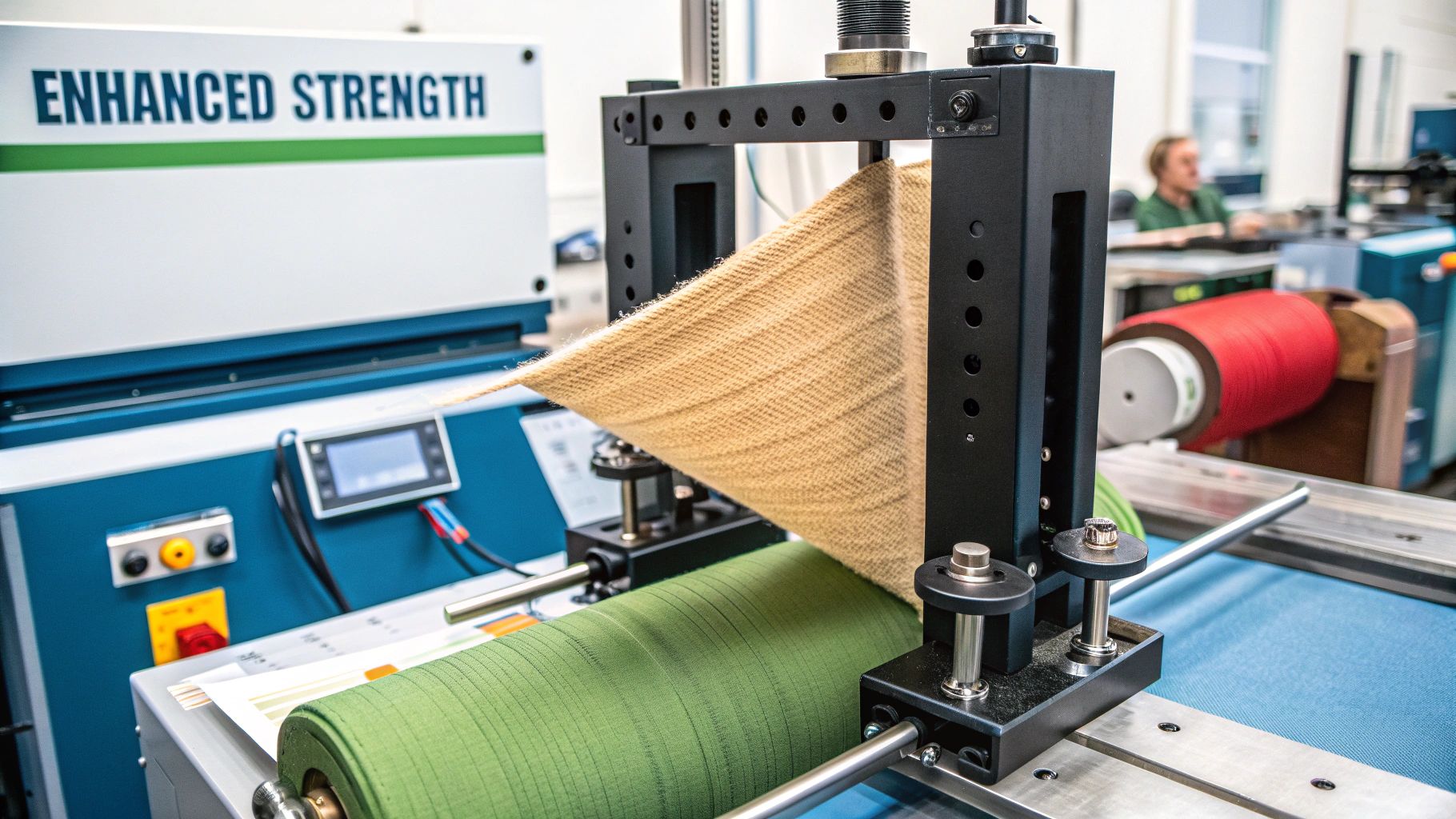
Lyocell holds a distinct advantage in the durability department. Its manufacturing process, which involves a closed-loop solvent system, creates stronger intermolecular bonds within the fibers. This results in a fabric that is significantly more resilient than viscose, especially when wet. Lyocell boasts a 30-40% higher wet strength compared to viscose. This means lyocell garments are less likely to tear, stretch, or lose their shape during washing and wear. This superior strength also translates to better dimensional stability and shape retention, meaning your lyocell clothes will maintain their fit and form over time.
Viscose, on the other hand, while initially soft and drapey, has a notable weakness: it loses strength when wet. This vulnerability makes viscose garments prone to stretching, damage, and shrinkage during laundering. While the initial softness and drape of viscose can be appealing, these qualities can diminish with repeated washes, leading to a garment that loses its original shape and appeal. This difference in wet strength is a critical point of comparison in the lyocell vs viscose debate.
The structural integrity of lyocell also contributes to reduced pilling. Pilling occurs when short or broken fibers on the fabric's surface tangle together, creating small, unsightly balls. Lyocell's stronger fibers are less likely to break and pill, resulting in a smoother, more refined appearance even after multiple washes. Viscose, due to its weaker fiber structure, is more susceptible to pilling, which can detract from the garment's overall appearance and longevity.
The superior abrasion resistance of lyocell further enhances its durability. Abrasion resistance refers to a fabric's ability to withstand rubbing and friction. Lyocell's robust fibers are better equipped to handle the wear and tear of daily life, making it an excellent choice for frequently worn items. This durability makes lyocell ideal for items like premium bedding, where longevity is a primary concern, or athletic wear, where the fabric needs to withstand rigorous activity. Companies like Brooklinen have popularized the use of lyocell in bedding, highlighting its long-lasting qualities. Everlane, a brand focused on sustainable practices, also features lyocell in its basics collection, recognizing the fabric's durability and environmentally friendly production process.
While viscose offers a lower initial cost and a desirable drape, its susceptibility to weakening when wet and its tendency to shrink can lead to a shorter lifespan for garments. This is particularly evident in fast fashion, where viscose is frequently used due to its low cost and ease of production. While these viscose garments may be initially appealing due to their affordability and trendiness, their shorter lifespan contributes to textile waste.
Pros:
- Lyocell: Long-lasting, maintains quality over time, resists pilling, strong wet strength, excellent shape retention.
- Viscose: Initially soft hand feel, drapes well, more affordable.
- Both: Better durability than cotton in certain applications.
Cons:
- Viscose: Weakens significantly when wet, prone to shrinkage, more prone to pilling, shorter lifespan.
- Lyocell: Higher initial cost may not suit all budgets.
Tips for consumers:
- Invest in lyocell for frequently used items: Consider lyocell for bedding, underwear, and other items you wash regularly. Its durability will ensure these pieces last longer, ultimately saving you money in the long run.
- Handle wet viscose garments carefully during washing: Avoid harsh agitation and wringing to prevent damage. Opt for gentle cycles and air drying when possible.
- Pre-treat viscose items to minimize shrinkage: Follow care instructions carefully and consider pre-shrinking viscose fabric before sewing.
- Choose appropriate fabric weight for intended use: Lighter weights for flowing garments, heavier weights for structured pieces.
Understanding the differences in durability and fiber strength between lyocell and viscose allows you to choose the fabric that best suits your needs and budget. While viscose might be a suitable choice for less frequently worn items, investing in lyocell for everyday essentials can provide long-term value and reduce textile waste.
4. Environmental Impact and Sustainability
When comparing lyocell vs viscose, the environmental impact is a crucial factor for today's conscious consumer. Understanding the sustainability of these fabrics is essential for making informed choices that align with your values. This section delves into the ecological footprints of both lyocell and viscose, highlighting their strengths and weaknesses regarding environmental responsibility.
Lyocell and viscose, both derived from cellulose, are often touted as eco-friendly alternatives to synthetic fibers like polyester. However, their production processes differ significantly, resulting in varying degrees of environmental impact. Lyocell, frequently marketed under the brand name TENCEL™, boasts a closed-loop production system that minimizes waste and pollution. This closed-loop system recovers and reuses 95-99% of the solvent used in the production process, drastically reducing chemical discharge into the environment. This makes it a frontrunner in sustainable textile production. Its biodegradable and compostable properties further contribute to its eco-friendly profile, allowing the fabric to return to the earth naturally at the end of its lifecycle. Furthermore, lyocell requires significantly less water than conventional cotton and even viscose production, making it a more water-wise choice. This lower water consumption translates to a reduced carbon footprint, contributing to a healthier planet. Finally, sustainable forestry sourcing requirements ensure that the wood pulp used in lyocell production comes from responsibly managed forests, minimizing the risk of deforestation.
Viscose, while derived from a renewable resource (wood pulp), has historically faced criticism for its environmental impact. Traditional viscose production involves the use of harmful chemicals, some of which are released into waterways, posing a threat to aquatic ecosystems and human health. Deforestation linked to unsustainable wood sourcing is another significant concern. However, the industry is actively working to improve its practices. Newer technologies and certifications, like Lenzing's EcoVero™, aim to reduce the environmental footprint of viscose production by minimizing water pollution and chemical discharge. These advancements signify a positive shift towards greater sustainability within the viscose industry.
Choosing between lyocell and viscose often involves weighing the pros and cons. Lyocell offers minimal environmental impact due to its closed-loop production and lower resource consumption. Its circular production model sets a high standard for sustainability in the textile industry. Viscose, while historically problematic, is showing signs of improvement with initiatives focused on reducing its environmental burden. Both fibers offer a biodegradable alternative to synthetic fibers, reducing the accumulation of plastic waste in landfills and oceans. However, both lyocell and viscose carry the risk of deforestation if the wood pulp is not responsibly sourced. Furthermore, lyocell currently faces a challenge in meeting the growing demand due to limited production capacity.
Several brands have championed the use of sustainable lyocell and viscose. Patagonia, known for its commitment to environmental responsibility, utilizes TENCEL™ lyocell in many of its garments. Eileen Fisher has also implemented sustainable viscose initiatives, working to minimize the environmental impact of its supply chain. Lenzing AG, a leading producer of cellulosic fibers, continues to push the boundaries of innovation with initiatives like EcoVero™ viscose, offering a more sustainable option within the viscose family. Learn more about Environmental Impact and Sustainability
As consumers, we can contribute to a more sustainable textile industry by making informed choices. Look for certifications such as FSC (Forest Stewardship Council) and PEFC (Programme for the Endorsement of Forest Certification), which indicate that the wood pulp used in production comes from responsibly managed forests. Choose brands that are transparent about their supply chains, enabling you to trace the origin of the fibers and understand the environmental impact of your purchase. Consider end-of-life disposal options, opting for composting whenever possible for biodegradable fibers like lyocell and viscose. Supporting closed-loop production systems like those used in lyocell manufacturing encourages further innovation and adoption of sustainable practices. The influential work of figures like Stella McCartney in sustainable fashion advocacy, Lenzing AG's environmental leadership, and the forest conservation efforts of organizations like Canopy are driving positive change in the industry. By being aware of these factors when comparing lyocell vs viscose, you can make choices that support a healthier planet.
5. Fabric Hand Feel and Drape
When choosing between lyocell and viscose, the fabric's hand feel and drape are crucial factors to consider. How a garment feels against the skin and how it flows on the body significantly impacts comfort and style. Both lyocell and viscose are renowned for their silk-like softness and excellent drape, often being compared to silk and other luxurious fabrics. However, subtle yet important differences exist between the two that make them suitable for different applications. Understanding these nuances will help you make informed decisions about your wardrobe and home textiles.
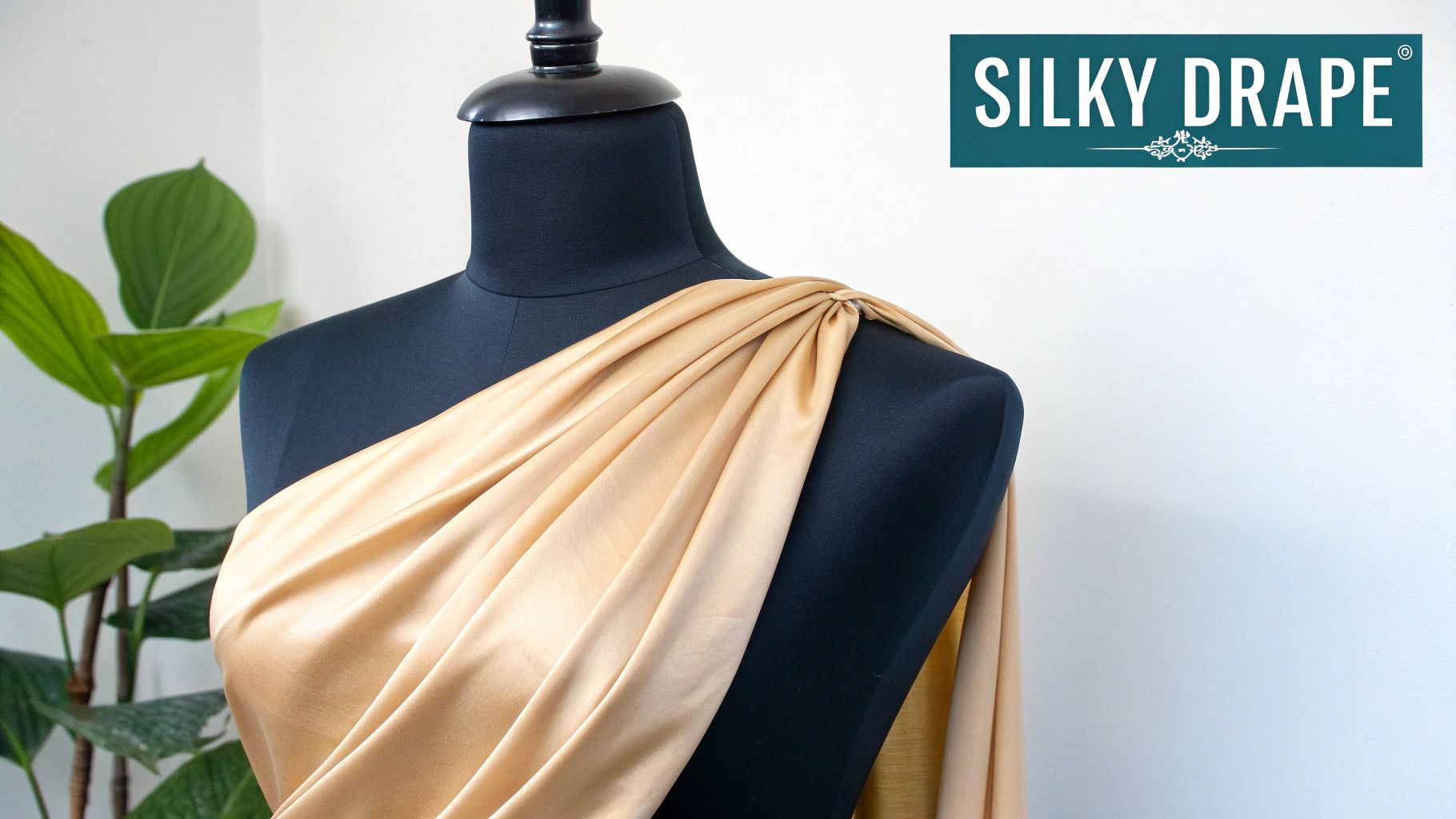
Lyocell boasts a consistently smooth hand feel. Its fibers are naturally strong and less prone to fibrillation (the formation of tiny pills on the fabric's surface), which helps it maintain its softness and shape even after repeated washes. This inherent durability makes lyocell ideal for garments that need to withstand regular wear and tear, like structured pieces or frequently laundered bedding. It provides a refined, almost polished feel against the skin.
Viscose, on the other hand, offers a luxuriously soft and fluid drape from the first wear. It has a slightly looser weave and a thinner fiber structure than lyocell, which gives it a more flowing, almost liquid-like drape. This characteristic makes viscose perfect for creating garments with movement and elegance, such as flowing dresses, skirts, and blouses. Viscose's drape and texture make it a popular choice for various garments. For example, these viscose shorts showcase the fabric's ability to create comfortable and stylish pieces. The material readily absorbs dyes, resulting in vibrant and saturated colors.
One key difference in the lyocell vs viscose debate lies in how their hand feel evolves over time. While lyocell maintains its consistent smoothness, viscose can sometimes become rough or lose its initial softness with repeated washing. This is due to the delicate nature of viscose fibers and their susceptibility to damage from friction.
Both fabrics share a natural silk-like luster and smooth surface texture, elevating their perceived value and providing a premium aesthetic. They drape exceptionally well compared to stiffer fabrics like cotton, making them ideal for creating garments with elegant silhouettes. Their excellent color retention and vibrancy contribute to their popularity in fashion and home textiles.
Pros:
- Lyocell: Consistent softness, maintains hand feel over time, excellent shape retention.
- Viscose: Luxurious initial drape, excellent color uptake, lightweight and breathable.
- Both: Superior to cotton in terms of smoothness, drape, and luster.
Cons:
- Lyocell: Can feel slightly less fluid than viscose initially, may require specific care instructions.
- Viscose: May become rough with repeated washing, can be prone to wrinkles.
Examples of Successful Implementation:
- Lyocell: High-end fashion brands utilize lyocell for structured garments like tailored trousers, jackets, and crisp button-down shirts. Its durability and shape retention ensure the garments maintain their form over time. Luxury bedding often showcases lyocell's consistent softness and breathability.
- Viscose: Flowing dresses, blouses, and scarves highlight viscose's beautiful drape and fluid movement. Its excellent color uptake allows for vibrant prints and rich solid colors.
Tips for Choosing and Caring:
- Feel fabric samples before purchasing: This allows you to experience the hand feel and drape firsthand, helping you determine which fabric best suits your preferences.
- Consider the intended garment structure and drape: Choose lyocell for structured pieces that require shape retention and viscose for flowing, drapey garments.
- Use appropriate finishing techniques to enhance hand feel: Certain finishes can improve softness, drape, and wrinkle resistance.
- Test fabric behavior after washing: Wash a small swatch of fabric before purchasing a garment made from either lyocell or viscose, especially viscose, to understand how it reacts to laundering.
By carefully considering these factors, you can choose the fabric that best suits your needs and enjoy the luxurious feel and drape of either lyocell or viscose. Understanding the distinct characteristics of lyocell vs viscose empowers you to select the perfect material for your next garment or home textile project. Whether you prioritize lasting smoothness or a luxuriously fluid drape, both fabrics offer compelling benefits that make them valuable alternatives to traditional materials.
6. Care Requirements and Maintenance
Understanding the care and maintenance needs of lyocell vs viscose is crucial for preserving the longevity and appearance of your garments and ensuring they remain suitable for their intended purpose. While both fabrics offer desirable qualities like softness and drape, their responses to washing, drying, and ironing differ significantly. This can influence your choice depending on whether you prioritize easy care or are willing to invest more time in maintaining a particular garment. Knowing how to properly care for each fabric will ultimately save you time, money, and frustration.
Lyocell generally boasts easier care requirements than viscose, making it a practical choice for busy individuals and frequently used items. Its inherent strength, even when wet, translates to less shrinkage and wrinkling. This resilience makes lyocell ideal for activewear, where repeated washing is necessary. Many activewear brands are now emphasizing their use of lyocell precisely for its easy-care properties, offering consumers durable and comfortable clothing that requires minimal upkeep.
Viscose, on the other hand, demands a gentler approach, particularly when wet. Its delicate nature makes it prone to shrinkage and wrinkling if not handled carefully. While more high-maintenance, viscose offers the advantage of being easy to iron and achieving crisp, wrinkle-free results, making it a popular choice for professional garments where a polished appearance is essential. Imagine a crisp viscose blouse – the smooth, wrinkle-free finish contributes to a professional and put-together look, even after a long day. This ease of ironing and excellent crease removal makes viscose a favored choice for garments that require a sharp, tailored appearance.
Let's delve deeper into the specific care requirements of lyocell vs viscose:
Machine Washable Properties: Both lyocell and viscose can be machine washed, but the specific settings depend on the fabric construction and any additional finishes. Always check the care label for specific instructions, as some blended fabrics may have unique requirements.
Wrinkle Resistance: Lyocell generally exhibits better wrinkle resistance than viscose, requiring less ironing. Viscose, while prone to wrinkling when wet, responds well to ironing, offering good crease removal.
Shrinkage Potential and Prevention: Lyocell's strong fiber structure makes it significantly less susceptible to shrinkage than viscose. For viscose, washing in cold water and air drying is highly recommended to minimize shrinkage.
Ironing and Steaming Requirements: While lyocell can be ironed, it's generally less necessary due to its wrinkle resistance. Use a lower temperature setting to avoid heat damage. Viscose, on the other hand, often benefits from ironing to remove wrinkles. It responds well to steam and achieves a smooth finish with relative ease.
Dry Cleaning Compatibility: While both fabrics can generally be dry cleaned, it's often unnecessary for lyocell unless the garment is particularly structured or embellished. Dry cleaning might be a preferred option for some viscose garments, especially those with complex designs or embellishments, to maintain their shape and prevent shrinkage.
Here's a summary of the pros and cons in the lyocell vs viscose care debate:
Pros:
- Lyocell: More forgiving care requirements, less shrinkage.
- Viscose: Easy to iron, good crease removal.
- Both: Generally colorfast with proper care.
Cons:
- Viscose: Prone to shrinkage and wrinkling when wet.
- Both: May require careful temperature control.
- Lyocell: Can be sensitive to high heat.
For items like home textiles, which undergo frequent washing, lyocell’s durability and easy care make it a practical choice. Sheets and towels made from lyocell can withstand regular washing without losing their shape or softness, offering long-lasting performance and comfort.
Tips for Caring for Lyocell and Viscose:
- Always check care labels: This provides specific instructions tailored to the garment's composition and construction.
- Use cool water and gentle cycles: This minimizes stress on the fibers and reduces the risk of shrinkage and damage.
- Air dry when possible: This is the gentlest drying method and prevents heat damage, especially for viscose.
- Iron on appropriate temperature settings: Use lower settings for lyocell and moderate settings for viscose.
- Consider professional cleaning for structured garments: This is especially important for tailored pieces or garments with embellishments.
By understanding the distinct care requirements of lyocell vs viscose, you can make informed choices about which fabric best suits your lifestyle and the demands of specific garments. Proper care will not only maintain the appearance of your clothing but also extend its lifespan, ensuring you get the most out of your investment.
Lyocell vs Viscose Fabric Comparison
| Fabric Characteristic | Implementation Complexity 🔄 | Resource Requirements ⚡ | Expected Outcomes 📊 | Ideal Use Cases 💡 | Key Advantages ⭐ |
|---|---|---|---|---|---|
| Production Process and Fiber Origin | Lyocell: Closed-loop, higher complexity 🔄 | Lyocell: Less water & energy; Viscose: cheaper ⚡ | Lyocell: Higher quality, eco-friendly 📊 | Lyocell: Premium sustainable textiles 💡 | Lyocell: Eco-friendly, non-toxic solvents ⭐ |
| Viscose: Open-loop, simpler but pollutant 🔄 | Viscose: Chemical intensive, more pollutants | Viscose: Lower cost, wider availability | Viscose: Cost-sensitive, established industry 💡 | Viscose: Lower production costs ⭐ | |
| Moisture Management and Breathability | Moderate complexity 🔄 | Moderate resource need ⚡ | Lyocell: Superior moisture-wicking & breathability 📊 | Activewear, bedding, hot climates 💡 | Lyocell: Exceptional moisture control ⭐ |
| Viscose: Moderate breathability | Casual wear in dry climates 💡 | Both: Better than synthetics for airflow ⭐ | |||
| Durability and Fiber Strength | Moderate complexity 🔄 | Higher for lyocell due to process ⚡ | Lyocell: Superior wet strength and abrasion resistance 📊 | Long-lasting apparel, bedding 💡 | Lyocell: Durable, maintains shape and strength ⭐ |
| Viscose: Softer initially, weaker when wet | Fast fashion, short lifecycle items 💡 | Viscose: Soft hand feel ⭐ | |||
| Environmental Impact and Sustainability | Lyocell: High complexity, closed-loop 🔄 | Lyocell: Lower water & chemicals ⚡ | Lyocell: Minimal environmental footprint 📊 | Sustainable fashion, eco-conscious brands 💡 | Lyocell: Circular production, biodegradable ⭐ |
| Viscose: Open-loop, simpler but polluting 🔄 | Viscose: Higher pollution risk | Viscose: Improving but still impactful | Transitional eco-initiatives 💡 | Both: Renewable cellulose source ⭐ | |
| Fabric Hand Feel and Drape | Low to moderate complexity 🔄 | Comparable resource needs ⚡ | Lyocell: Smooth, consistent hand feel 📊 | Structured garments, luxury bedding 💡 | Lyocell: Consistent softness ⭐ |
| Viscose: Softer, fluid drape | Flowing dresses, blouses 💡 | Viscose: Luxurious initial drape ⭐ | |||
| Care Requirements and Maintenance | Low to moderate complexity 🔄 | Moderate resource needs ⚡ | Lyocell: Easier care, less shrinkage 📊 | Activewear, everyday wear 💡 | Lyocell: Forgiving care, less shrinkage ⭐ |
| Viscose: Requires gentle handling | Professional garments needing special care 💡 | Viscose: Easy to iron ⭐ |
Making the Right Choice: Lyocell or Viscose?
When comparing lyocell vs viscose, the ultimate decision hinges on your individual needs and values. Throughout this article, we've explored key differences, from their production processes and environmental impact to their durability, drape, and care requirements. While both fabrics offer a soft hand feel and breathable comfort, lyocell often emerges as the more sustainable and durable choice thanks to its closed-loop production and stronger fibers. Viscose, while more readily available and often less expensive, may require more delicate care and has a greater environmental footprint depending on the production practices employed. Understanding these distinctions empowers you to make informed purchasing decisions that align with your lifestyle and values.
Mastering the nuances of lyocell vs viscose allows you to choose textiles that are not only beautiful and comfortable but also contribute to a healthier planet. By opting for sustainable materials and supporting responsible manufacturing, you are investing in a future where fashion and function coexist harmoniously with the environment.
For an unparalleled experience of lyocell's luxurious comfort and eco-conscious benefits, discover the David Le Blanc collection, crafted from premium TENCEL™ Lyocell, at Olive + Crate. Experience the difference of consciously chosen textiles and elevate your everyday comfort with Olive + Crate.

